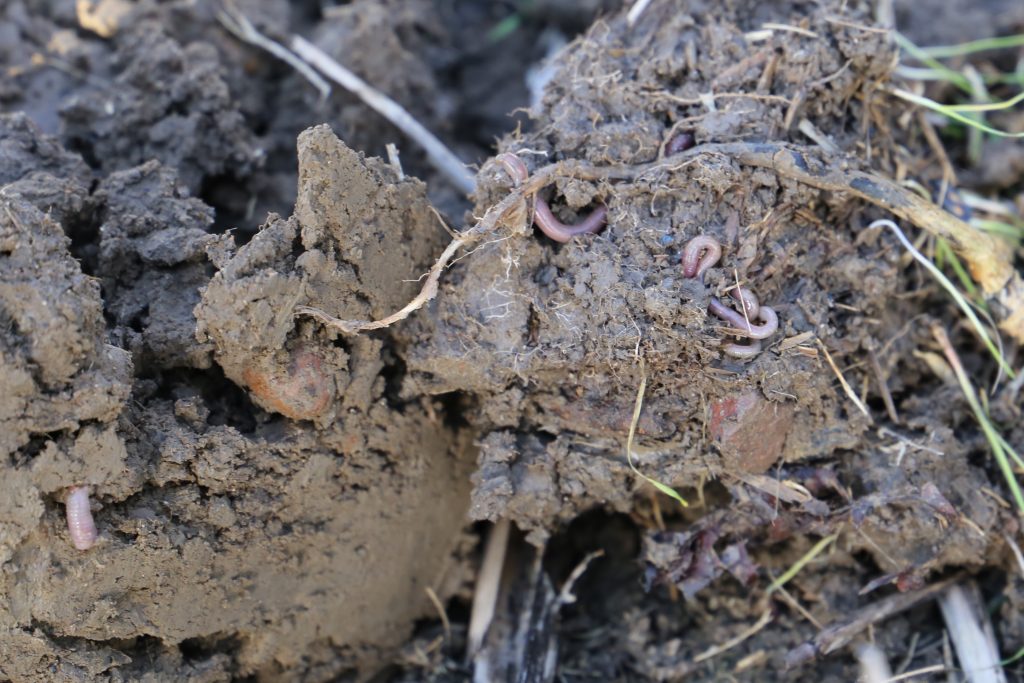
Stubble Turnips - 20" (50cm) | Ryegrass & Vetch - 30" (75cm) | Mustard - 60"(150cm) | Radish - 55" (140cm) - 27th October
The stubble turnips and forage rape mix is coming along nicely although they it is now looking a little hungry for nutrition. As this was purely an establishment experiment and we didn’t intend to graze it, we may give it a boost of autumn nitrogen soon which would now be due if we were growing it as a commercial fodder crop.


This mix is still looking the least inspiring of the four trialled varieties and looks more like a mass of volunteers than actual Ryegrass. That being said the Ryegrass plants are substantial in size with around 20 tillers each, and a large network of fine roots.
Lower in quantity the vetch plants are clearly visible in the mix and look quite striking in their own delicate way. When pulled, the roots expose nitrogen fixing nodes although a lot of the network is very fine and damaged when pulled.
The mix has covered the ground well and is dense, but I worry that it will hold the soil damp and cold in the spring.


This is looking like it has been the quickest to grow, or at least certainly the biggest!
The crop has shot up in a short space of time, and outranks the other trials in terms of height. Although, it hasn’t branched out as much as I would have liked and is relatively thin, it looks impressive nonetheless.
Every plant has a flower starting to form and some are even out, displaying a vibrant yellow head.


Although not as tall as the Mustard, the Radish mix is plenty thick enough and well into flower. Cheap and easy to establish it provides plenty of cover. Perhaps somewhat biased, I have favoured this mix throughout and it is still holding on to the top spot in my eyes, but I am open to being surprised.


For many, cover crops represent an unwanted additional expense of time and money. However, with careful management and a dose of good-old-fashioned common sense, there is a lot to be gained from a humble green crop.
Harvesting sunlight – Time is of the essence
On our farm, we are keen to maximise the amount of sunlight we capture and convert it into beneficial dry matter. August and September are two of the best months for sunlight yet arable rotations are rarely green at this time of year. Getting cover crops in straight after the combine is the best way to close this gap and make the most of the late summer rays, minimising wasted sunlight hours. It really is a case of every lost day is the equivalent to a couple of inches of growth. Undoubtedly, we are lucky in the sense that we can literally follow the combine with our Pro-Til drill and don’t have to hang around with unnecessary cultivation’s.
Wind & Water erosion – Keep it together
Spring cropping is too good an opportunity to miss in the arsenal against grassweeds. And we believe over winter soil cover is simply a must. Cover crops provide just this, and offer unrivalled soil protection from the harsh winter elements. Physical plant matter, along with an intricate network of rooting systems holds the soil, reducing wind erosion and leaching of water and nutrients.
Soil fertility – Matters of the organic variety
Soil health and organic matter go hand in hand and is something that cover crops can have a huge positive effect on. Since converting to strip tillage and incorporating cover crops into our rotation we have seen a huge increase in organic matter levels in our soils. Drilling directly into cover crop residue gives soil organisms added nutrition which is then recycled back into the soil, raising fertility. The addition of legumes into a cover mix will benefit from nitrogen fixing properties, whilst non-legumes will retain nutrients in the soil.

